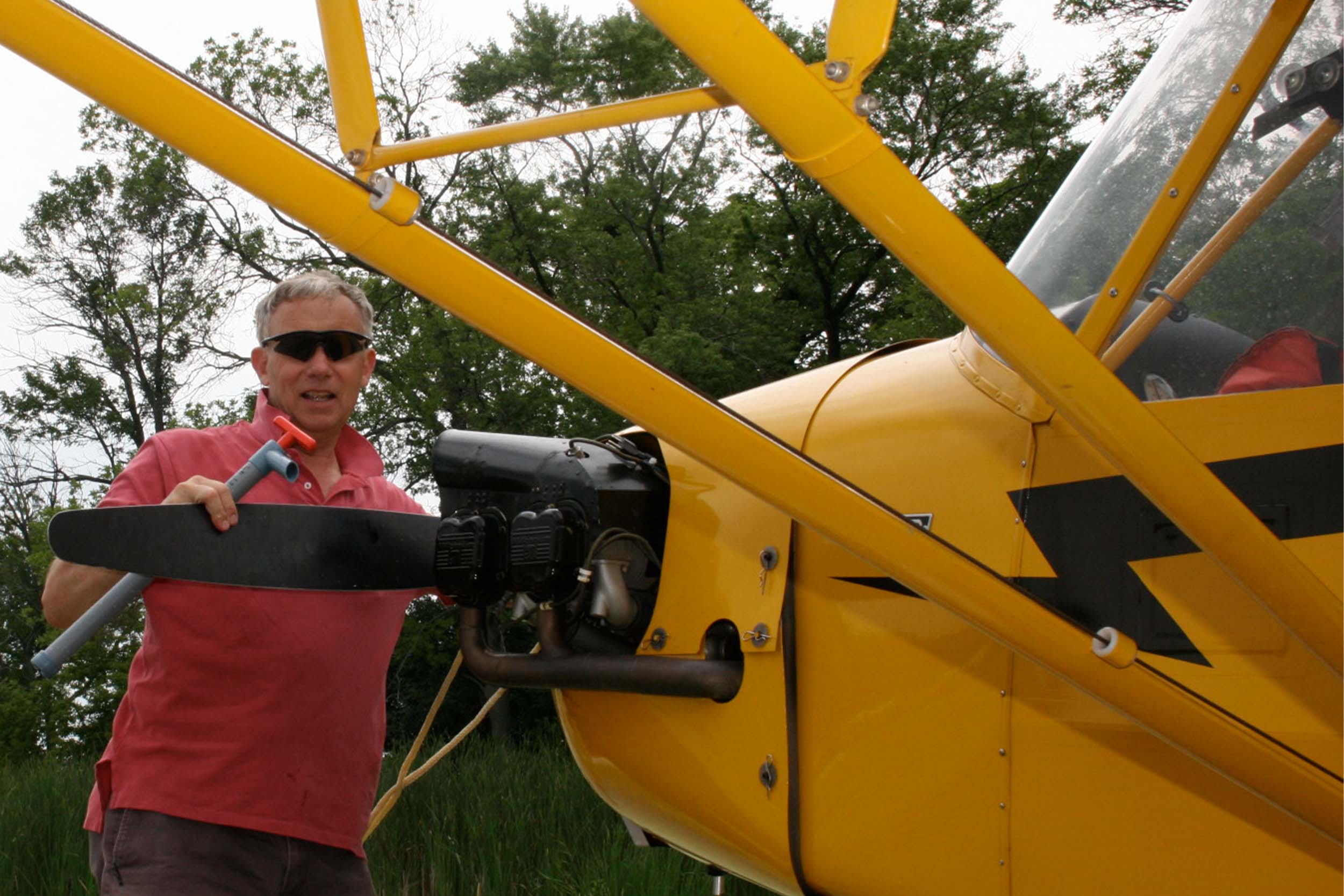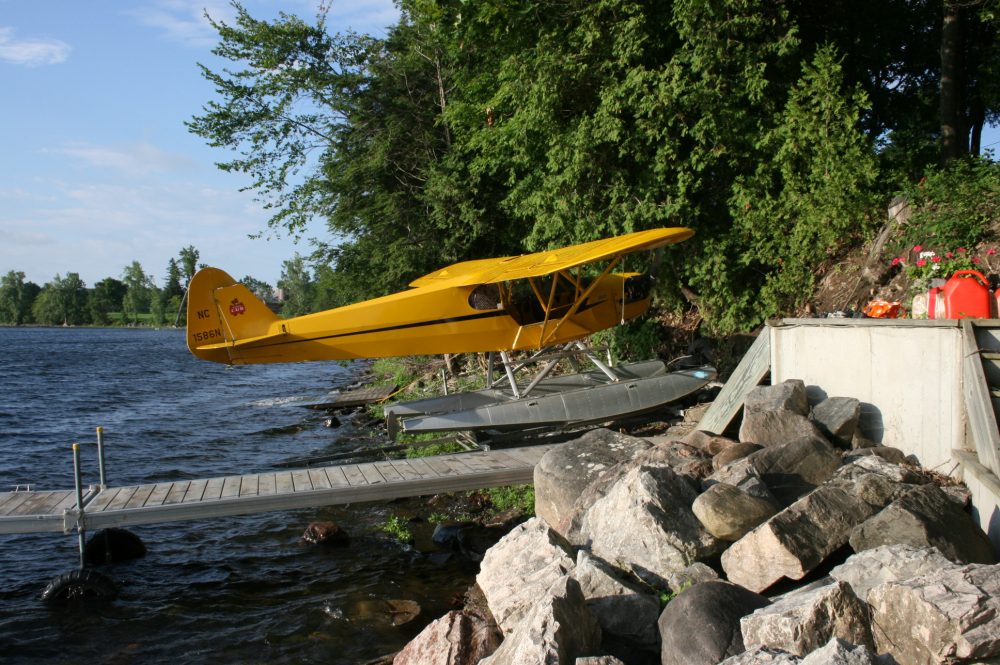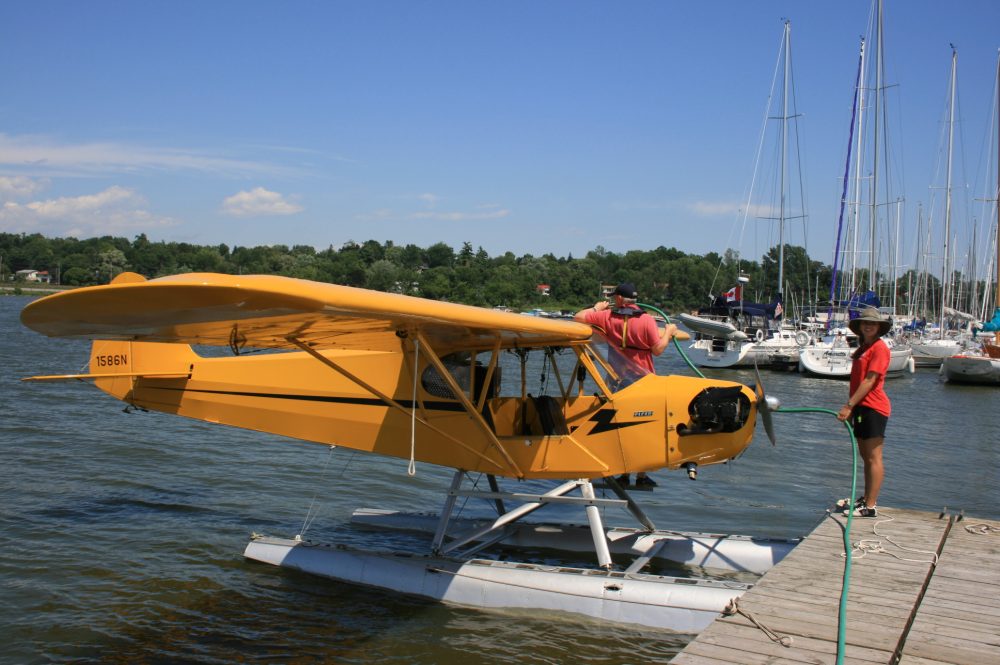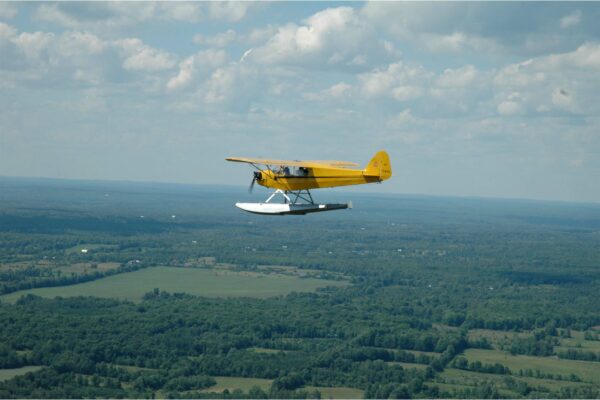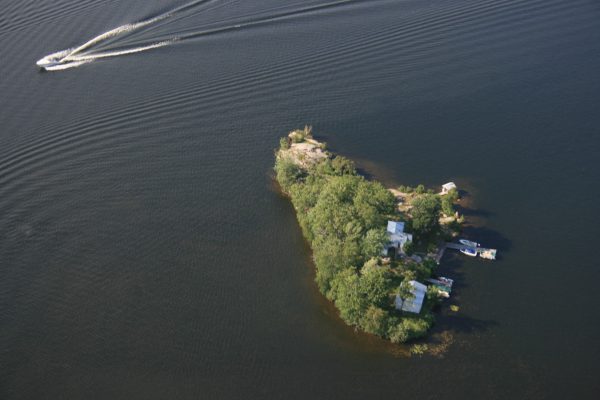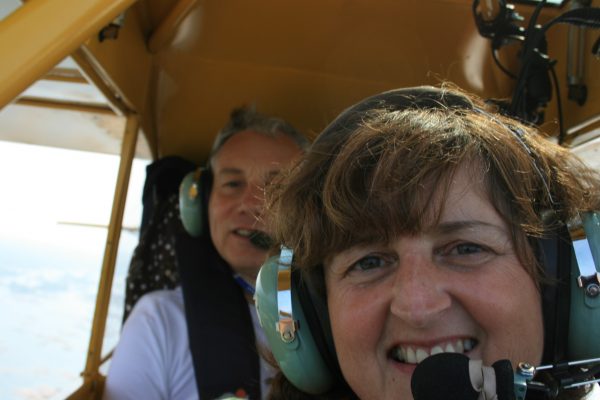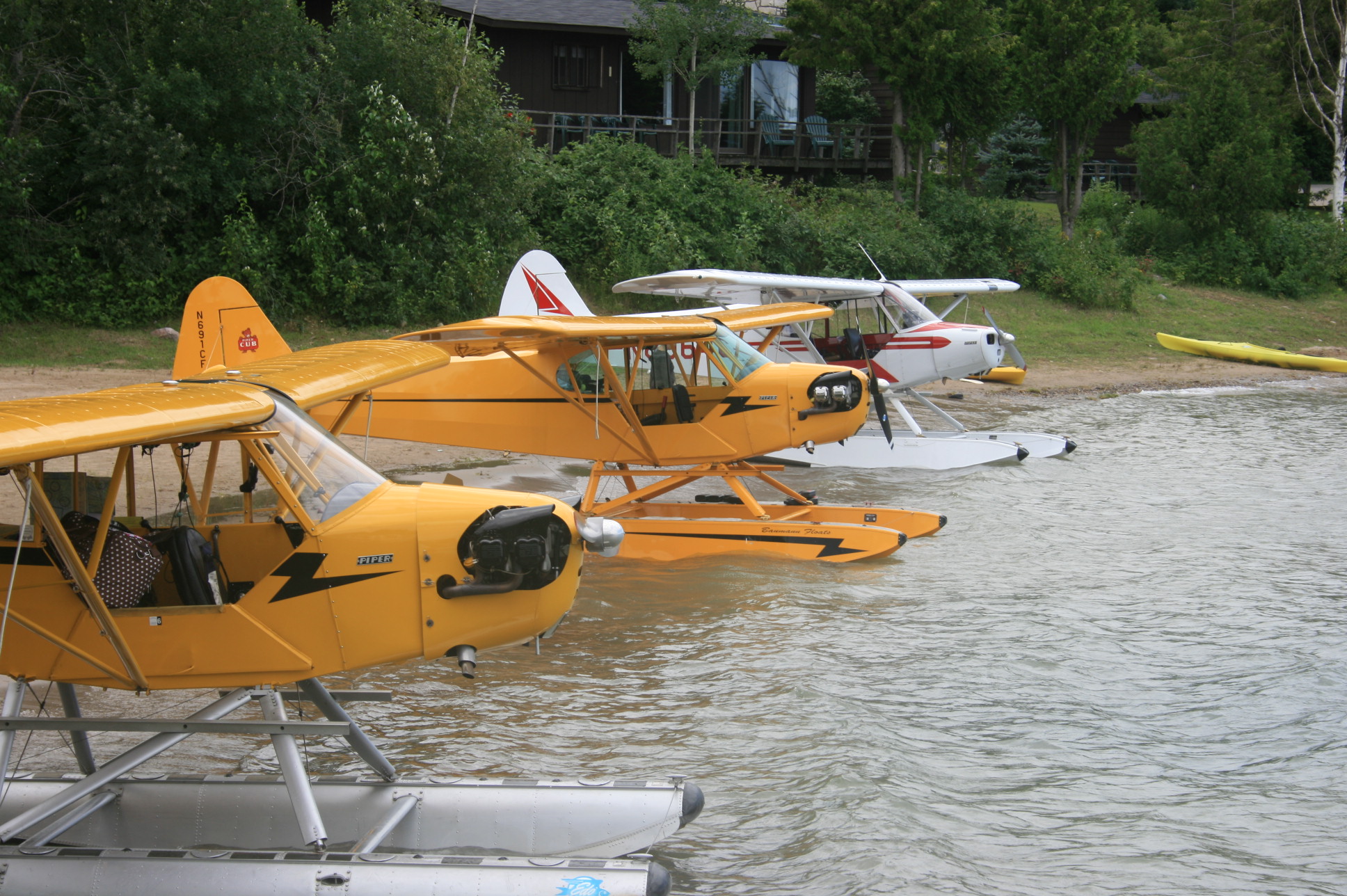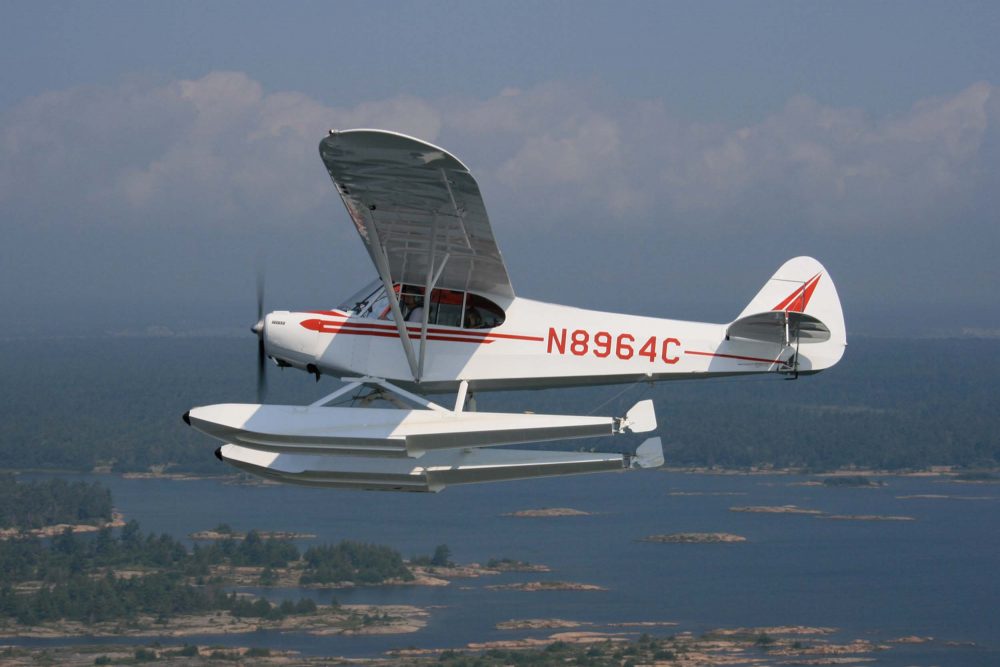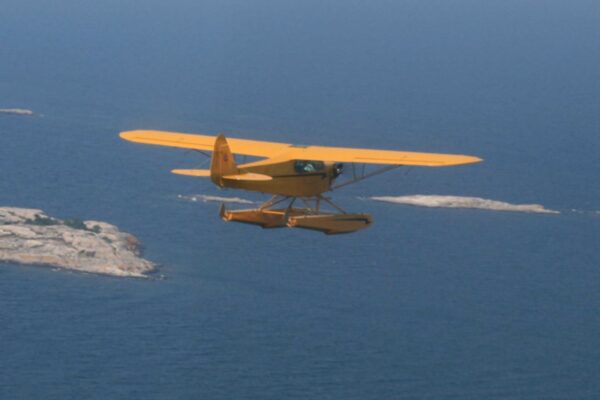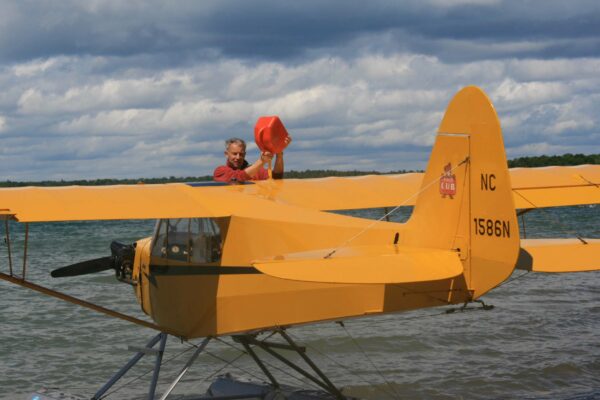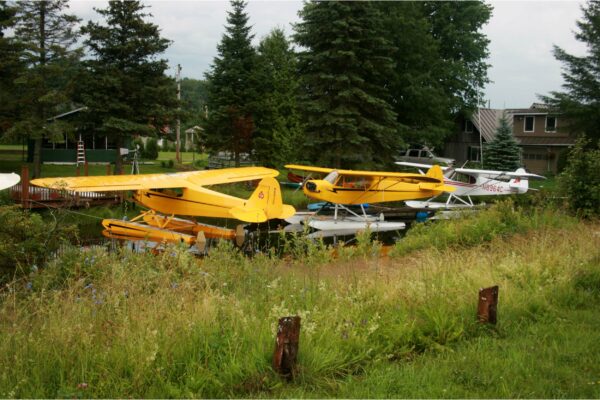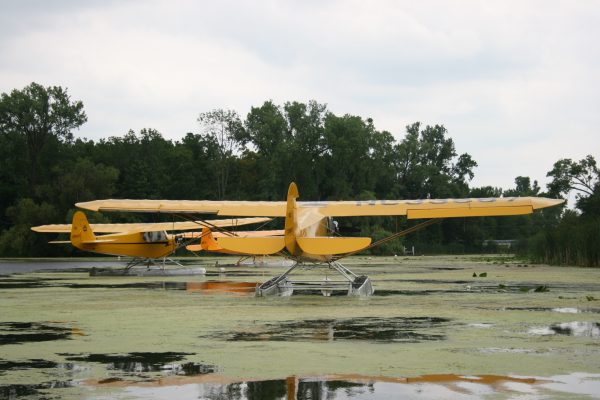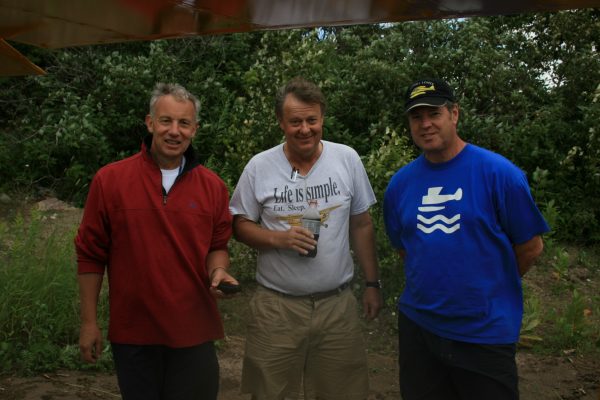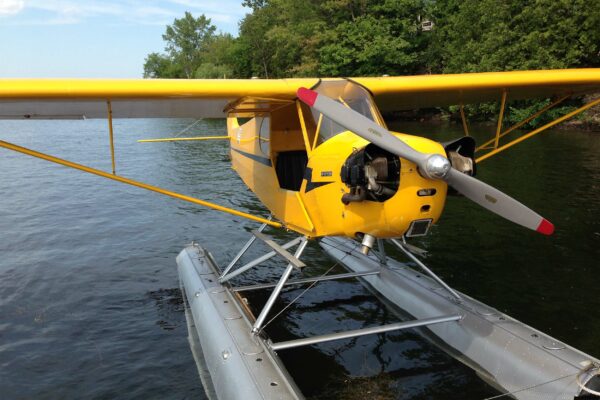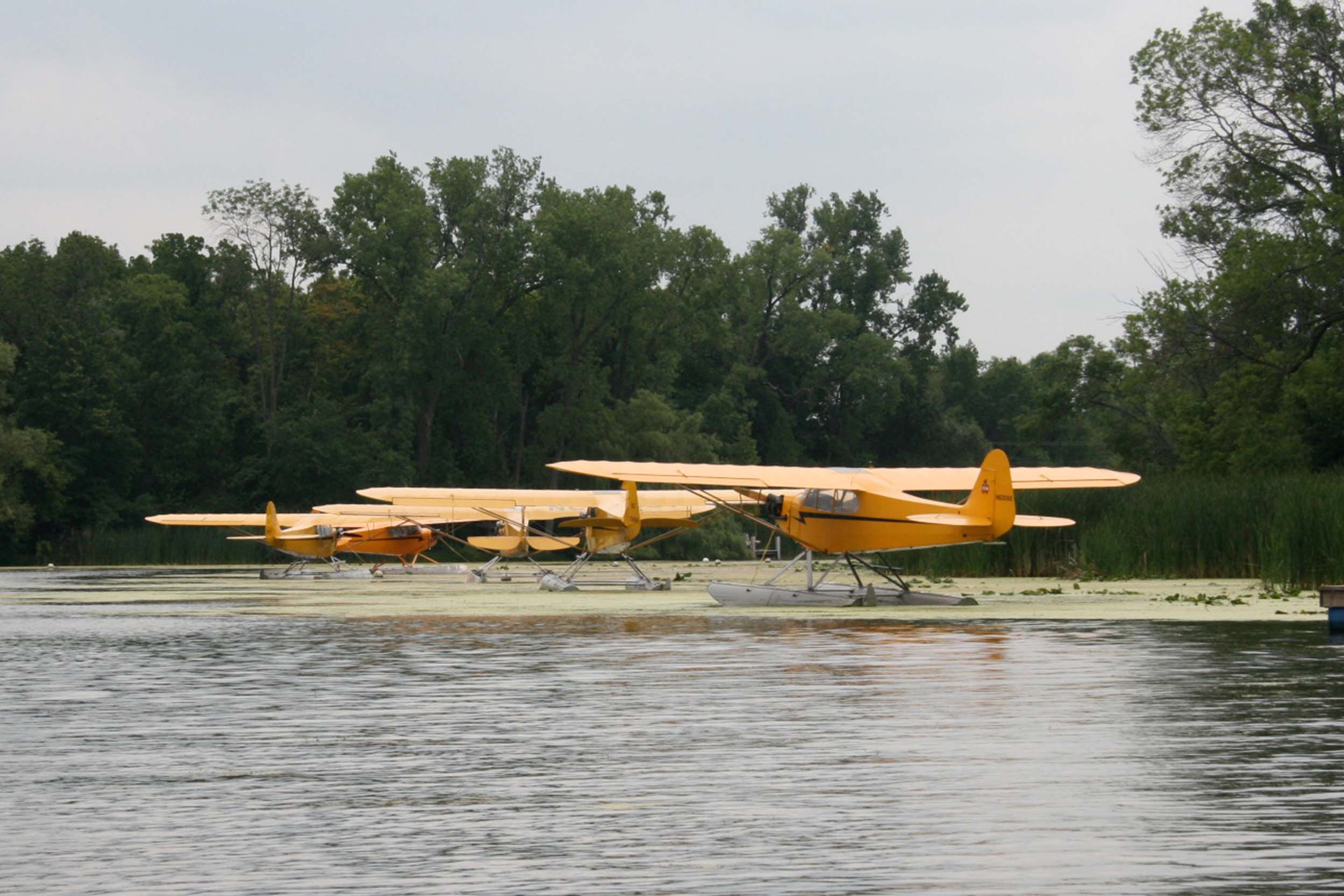We taxi in, are marshalled to our dock, willing hands expertly tie mooring lines and we shut down after 18 hours flying.
We unload, refuel, tidy up and then the EAA’s boat-handlers expertly tow the Cub away to moor it in a line of other yellow Cubs, a line around the prop hub attached to a swinging mooring.
A truck, which driven ahead of us to the show, awaits. Doug’s part-time business is selling aeroplane fabrics and teaching covering techniques to homebuilders. The truck contains all the items for his stand and so we head off to Wittman Field to set up for the show, which opens in the morning.
Doug has rented a house nearby while we are at Oshkosh. We have three nights there for Monday and Tuesday of the show.
The show is as good as I’ve imagined. People from everywhere, aeroplanes of every sort and a freedom to walk around and get ‘up close and personal’ to examine the aeroplanes in detail. No litter, good-natured queues for food and drink and talks on all sorts of things.
Sharing a table in the shade with a cold drink, we chat to a charming couple from Texas. We boast about our epic voyage, about how high we’ve flown the Cub, how fast, how cold it became, how we battled the elements and won. Then I ask, “And you, how did you get here?” “Oh, we came in our Harvard. In formation. Six of us,” they reply modestly, as if it is an everyday thing…
The cancellation of Oshkosh 2020, as with so much that we have lost this year due to the pandemic, will be keenly felt by many. But the sun will still rise tomorrow, and we will – at some point – get back to normal. My resolve is firm. The return of Oshkosh, be it 2021 or later, will signal a victory over this virus – and I will celebrate by being there…


